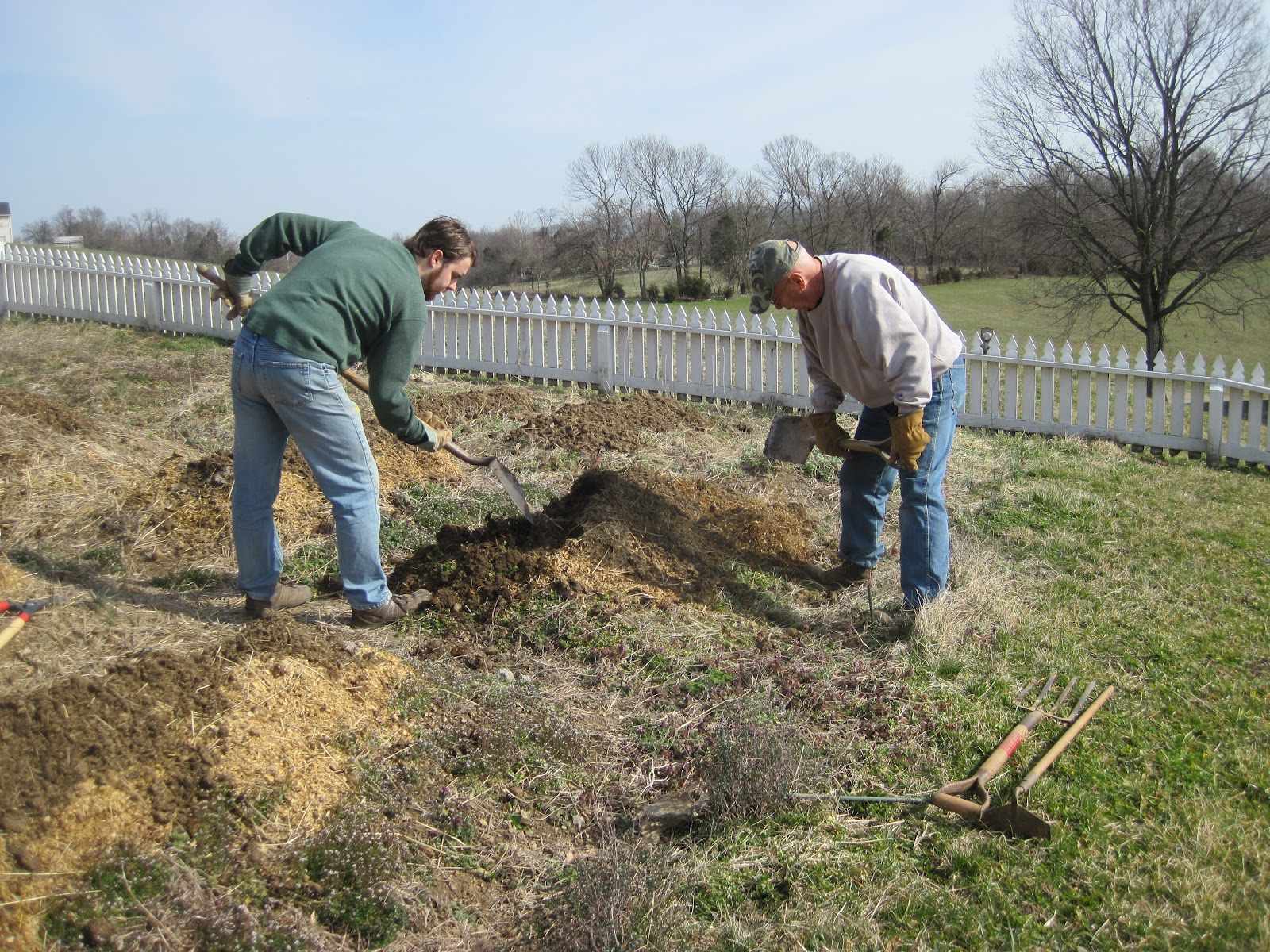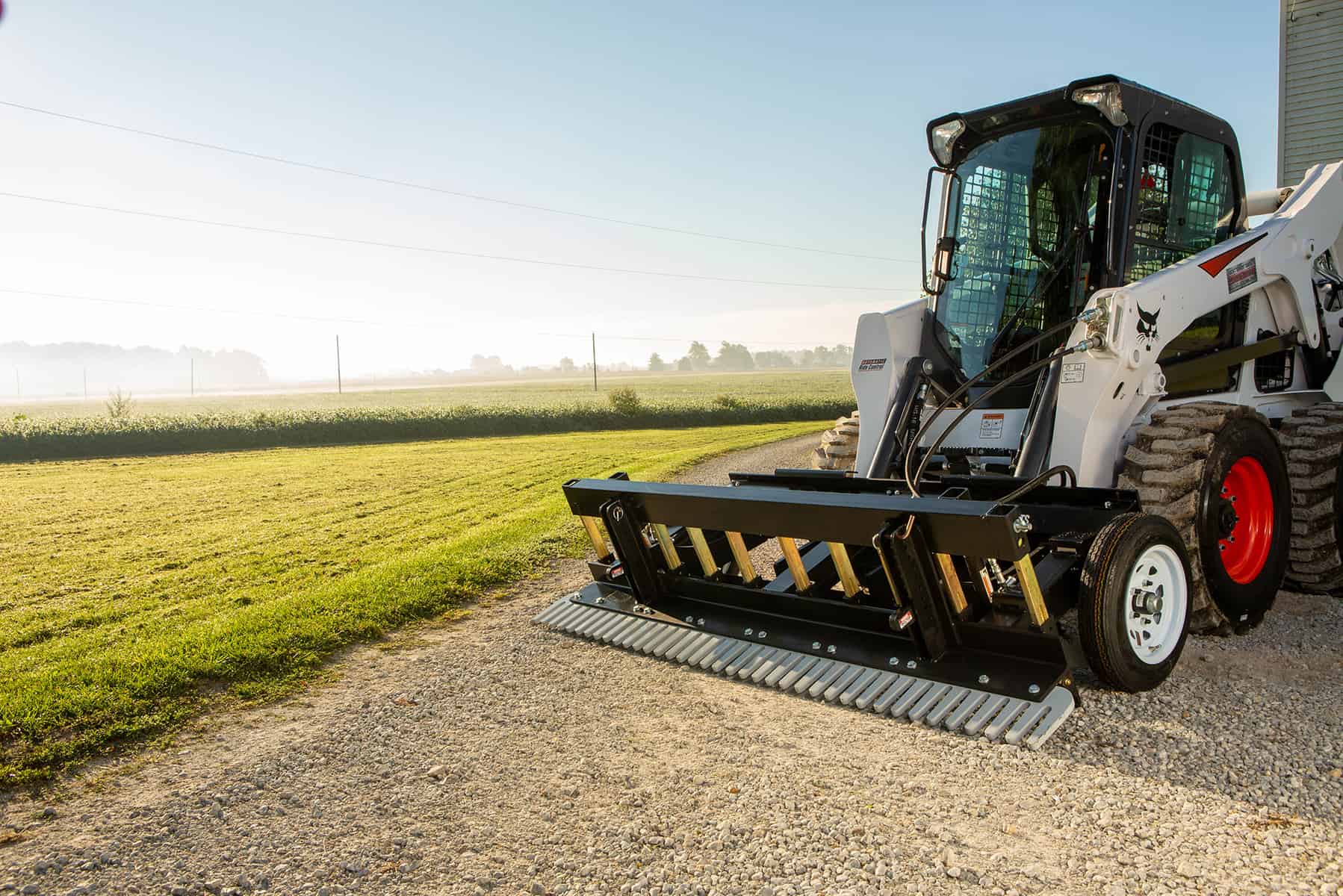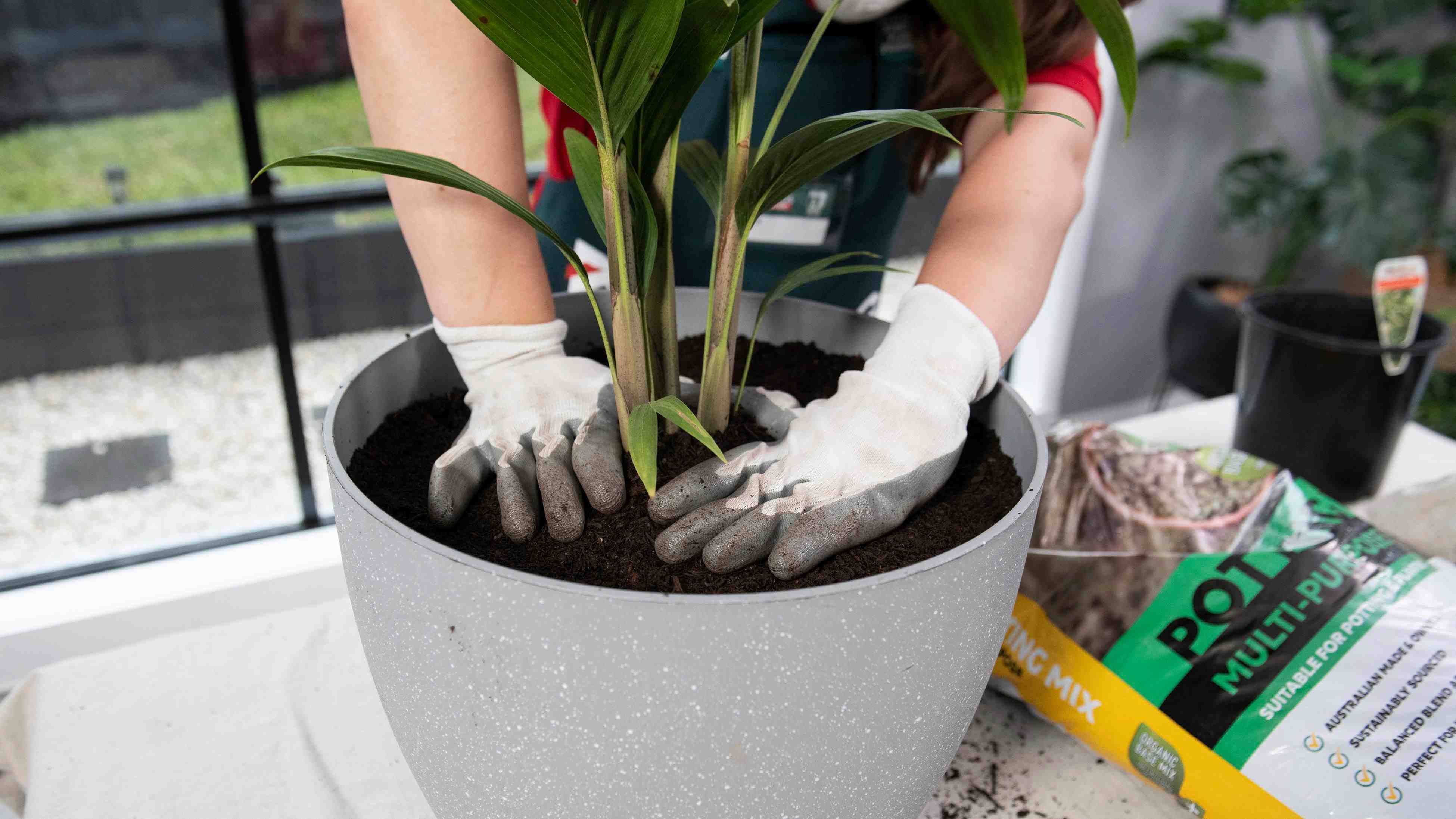Home>Gardening News and Trends>Gardening Trends>The Process By Which Soils Are Turned Over To Prepare Them For Planting Is Called


Gardening Trends
The Process By Which Soils Are Turned Over To Prepare Them For Planting Is Called
Modified: February 8, 2024
Discover the latest gardening trends and learn about the process of preparing soils for planting in this comprehensive guide.
(Many of the links in this article redirect to a specific reviewed product. Your purchase of these products through affiliate links helps to generate commission for Chicagolandgardening.com, at no extra cost. Learn more)
Table of Contents
Introduction
Welcome to the fascinating world of gardening! Whether you are a seasoned gardener or just starting out, understanding the process and importance of soil turnover is crucial for successful plant growth. Soil turnover, also known as soil cultivation or soil tilling, refers to the practice of turning over the top layers of soil to prepare it for planting.
Soil turnover involves the physical manipulation of the soil, which can have a profound impact on its structure, nutrient availability, and overall health. This process is performed using various equipment and techniques, depending on the scale and purpose of gardening activities.
In this article, we will explore the importance of soil turnover, the equipment and techniques involved, as well as the benefits and limitations associated with it. We will also discuss some best practices that can help you make the most out of this essential gardening activity.
Whether you are preparing a small vegetable garden in your backyard or managing a large-scale agricultural operation, understanding the ins and outs of soil turnover will undoubtedly help you create an environment where plants can thrive.
Definition of Soil Turnover
Soil turnover, also known as soil cultivation or soil tilling, is the process of mechanically manipulating the top layers of soil to improve its quality and prepare it for planting. This practice involves breaking up compacted soil, mixing in organic matter, and creating a loose, friable surface for seeds or seedlings to establish their roots.
There are several methods used for soil turnover, ranging from simple manual techniques to heavy machinery. These methods, such as plowing, rototilling, or double-digging, involve turning over the top layer of soil, effectively bringing the lower layers closer to the surface and mixing them with the organic matter.
The primary objective of soil turnover is to create an optimal growing environment for plants. By loosening the soil and improving its structure, soil turnover promotes better drainage, aeration, and root penetration. It also helps to incorporate organic matter into the soil, such as compost or manure, which enriches its nutrient content and enhances its fertility.
Soil turnover is typically carried out before the planting season or when establishing a new garden bed. It is especially important for areas with compacted soil, as it helps break up the hard-packed layers, allowing plants’ roots to access water, nutrients, and oxygen more easily.
It’s worth noting that soil turnover is not always necessary or suitable for every gardening situation. In some cases, such as in established perennial beds or delicate ecosystems, excessive soil disturbance can disrupt the delicate balance and cause more harm than good. Therefore, before embarking on soil turnover, it is essential to consider the specific needs of your garden and consult with local gardening experts.
Reasons for Soil Turnover
Soil turnover is a common practice in gardening and agriculture due to the numerous benefits it brings to the soil and plants. Understanding the reasons for soil turnover can help you make informed decisions about when and how to implement this technique in your gardening endeavors.
- Improving soil structure: One of the primary reasons for soil turnover is to improve the soil’s structure. Over time, soil can become compacted, making it challenging for plant roots to penetrate and access necessary nutrients and water. Turning over the soil loosens its texture, allowing for better root growth and overall plant establishment.
- Incorporating organic matter: Soil turnover provides an opportunity to incorporate organic matter into the soil. Organic matter, such as compost, manure, or cover crops, helps improve soil fertility, adds essential nutrients, and enhances the soil’s ability to retain moisture. By mixing organic matter during soil turnover, you are enriching the soil and creating a nutrient-rich environment that supports plant growth.
- Enhancing drainage and aeration: Compacted soil often leads to poor drainage and limited airflow. Soil turnover breaks up compacted layers and creates channels for water to drain effectively. It also promotes better aeration by allowing oxygen to reach plant roots and beneficial microorganisms residing in the soil. Improved drainage and aeration help prevent waterlogging, root rot, and other conditions that can hinder plant growth.
- Controlling weeds and pests: Soil turnover can disrupt weed growth by burying weed seeds deeper in the soil, preventing them from germinating and competing with desired plants. Tilling also exposes pests, such as grubs and larvae, to natural predators, reducing their population and potential damage to crops.
- Preparing for planting: Before planting seeds or young plants, it is essential to prepare the soil adequately. Soil turnover helps create a loose, friable surface that is conducive to seed germination and easy root penetration. It provides a clean slate where plants can establish healthy root systems and grow efficiently.
While there are clear benefits to soil turnover, it is important to note that it may not be necessary or suitable for all gardening situations. Some ecosystems, such as established perennial gardens or delicate habitats, may thrive better with minimal soil disturbance. Consider the specific needs of your garden and seek guidance from local gardening experts to determine the appropriate approach.
Equipment and Techniques for Soil Turnover
Soil turnover can be accomplished using a variety of equipment and techniques, ranging from basic manual tools to heavy machinery. The choice of equipment and technique depends on the scale of the gardening project, the type of soil, and personal preferences. Here are some commonly used equipment and techniques for soil turnover:
- Manual Tools: For small-scale gardening projects or areas with limited space, manual tools are commonly used. These include shovels, spades, and garden forks. Using these tools, you can turn over the soil by digging and loosening it, incorporating organic matter, and breaking up any compacted areas. Manual tools allow for more precise control, especially in delicate areas or established gardens.
- Rototillers: Rototillers, also known as tillers or cultivators, are motorized machines that feature rotating blades or tines. They effectively break up compacted soil and mix in organic matter. Rototillers come in various sizes, from small handheld or electric models for small gardens to larger gasoline-powered machines for larger areas. When using a rototiller, it’s important to avoid over-tilling or excessively disrupting the soil, as it can lead to soil compaction in the long run.
- Plows: Plows are commonly used in larger-scale agricultural operations. These heavy-duty machines are designed to break through compacted soil, turn it over, and create furrows for planting. Plows are typically attached to tractors and come in different configurations, such as moldboard plows, chisel plows, or disc plows. They are efficient for preparing large fields or gardens but may not be suitable for smaller, more intricate areas.
- No-Till Techniques: In recent years, there has been a growing interest in no-till or low-till gardening techniques. These methods minimize soil disturbance and promote the preservation of soil structure and beneficial microorganisms. No-till techniques involve using cover crops, mulch, or specialized equipment, such as no-till drills or strip tillage machines, to plant directly into undisturbed soil. While reducing the need for soil turnover, these techniques require careful management and a focus on building and maintaining healthy soil over time.
When using equipment for soil turnover, it is important to consider safety precautions, especially when handling motorized machinery. Follow the manufacturer’s instructions and wear appropriate protective gear, such as gloves and eye protection. Additionally, be mindful of underground utilities or irrigation systems that may be present in the area before starting any excavation.
Ultimately, the choice of equipment and techniques for soil turnover depends on the specific needs and constraints of your gardening project. Consider the scale, type of soil, and long-term goals for your garden when deciding which method is most suitable for you.
Benefits and Limitations of Soil Turnover
Soil turnover brings both benefits and limitations to gardening and agricultural practices. Understanding these pros and cons can help you make informed decisions about whether to incorporate soil turnover into your gardening routine. Let’s explore the benefits and limitations in more detail:
- Benefits:
- Improved soil structure: Soil turnover loosens compacted soil, creating a friable texture that allows for better root penetration and growth. It improves the soil’s ability to retain water and nutrients.
- Enhanced nutrient availability: By incorporating organic matter into the soil during turnover, essential nutrients are added, enhancing the soil’s fertility and providing plants with the necessary elements for healthy growth.
- Better drainage and aeration: Soil turnover improves soil porosity, allowing excess water to drain properly and preventing waterlogging. It also enhances the soil’s ability to trap air, ensuring adequate oxygen supply for plant roots.
- Weed and pest control: Turning over the soil can bury weed seeds deeper, minimizing weed growth. It also exposes pests and disrupts their habitats, reducing their populations and potential damage to crops.
- Improved seed germination and establishment: A well-turned soil provides a loose, favorable environment for seeds to germinate and establish strong root systems. This promotes healthier and more vigorous plant growth.
- Limitations:
- Potential soil erosion: Soil turnover can increase the risk of soil erosion, especially on sloped terrain. Exposed soil is more susceptible to erosion by wind or water. It is important to implement erosion control measures, such as mulching or terracing, to minimize this risk.
- Increased microbial disruption: Soil turnover can disrupt the habitats of beneficial soil microorganisms that contribute to nutrient cycling and overall soil health. While necessary, excessive soil disturbance can temporarily disrupt this delicate balance, necessitating additional efforts to restore microbial activity.
- Possible soil compaction: Over time, repeated soil turnover can lead to soil compaction, especially in heavy clay soils. This can hinder water infiltration and root penetration, requiring additional measures to alleviate compaction, such as using cover crops or implementing no-till techniques.
- Time and energy-intensive: Soil turnover, especially on a larger scale, can be time and labor-intensive. It requires physical effort and can be challenging for those with physical limitations or limited time availability.
- Disruption of soil ecosystems: Soil turnover disturbs the existing soil ecosystems, impacting the diversity and balance of soil organisms. While some disturbance is necessary, it’s important to strike a balance to preserve the overall health and functioning of the soil ecosystem.
When deciding whether to incorporate soil turnover, it is crucial to carefully weigh the benefits and limitations. Consider the specific needs of your garden, the long-term goals, and the potential impacts on soil health before implementing soil turnover practices.
Best Practices for Soil Turnover
While soil turnover can be beneficial for your garden, it is important to follow best practices to ensure optimal results and minimize potential negative impacts. Here are some best practices to consider when performing soil turnover:
- Timing: Perform soil turnover when the soil is neither too dry nor too wet. Working with moist soil makes it easier to break up clumps and achieve a desirable consistency. Avoid working with wet soil as it can lead to compaction and damage the soil structure.
- Start small: If you’re new to gardening or have limited space, start with a small area. This allows you to gain experience and understand the impact of soil turnover on your specific soil type and gardening needs before tackling larger areas.
- Minimize soil disruption: While some soil disturbance is necessary for soil turnover, aim to minimize excessive disruption. Avoid over-tilling or repeatedly turning over the soil, as this can lead to compaction and disruption of soil ecosystems. Only turn over the top few inches of soil, as this is where most roots and organic matter are concentrated.
- Protect against erosion: To prevent soil erosion, consider implementing erosion control measures. Mulching the soil surface with organic materials, such as straw or wood chips, helps to protect the exposed soil from wind or water erosion. Terracing or contouring on sloped terrain can also help minimize the risk of erosion.
- Incorporate organic matter: During soil turnover, incorporate organic matter, such as compost or well-rotted manure, into the soil. This helps improve soil fertility and adds essential nutrients. Spread a layer of organic matter over the loosened soil and gently mix it in to ensure even distribution.
- Consider soil amendments: Based on soil test results, consider incorporating targeted soil amendments to address specific deficiencies or imbalances. This could include adding lime to adjust pH levels or incorporating specific minerals or micronutrients as recommended.
- Practice crop rotation: In agricultural or larger-scale gardening operations, employ crop rotation principles to help manage soil fertility and reduce disease and pest pressure. Rotating crops helps prevent the buildup of pests and pathogens associated with specific plant families.
- Maintain soil moisture: After soil turnover, monitor and maintain appropriate soil moisture levels. Adequate watering and mulching can help retain moisture in the soil, ensuring optimal conditions for seed germination and root establishment.
- Continual soil improvement: Soil turnover should be seen as a part of an ongoing process to improve soil health. Implement practices like composting, cover cropping, and the use of organic fertilizers to continuously add organic matter and improve soil structure.
By following these best practices, you can maximize the benefits of soil turnover while minimizing potential negative impacts. Every garden is unique, so adapt these practices to suit your specific needs and environmental conditions.
Conclusion
Soil turnover, or soil cultivation, plays a crucial role in creating an optimal environment for plants to thrive. By breaking up compacted soil, incorporating organic matter, and improving drainage and aeration, soil turnover provides numerous benefits for successful gardening and agriculture.
Through the use of manual tools, such as shovels and forks, or motorized equipment like rototillers and plows, gardeners can effectively turn over the soil, preparing it for seed germination and plant establishment. However, it’s important to note that soil turnover is not always necessary or suitable for every gardening situation. Careful consideration should be given to factors such as soil type, the scale of the project, and the desired outcomes.
While soil turnover can significantly improve soil structure, enhance nutrient availability, and help control weeds, pests, and disease, it also has limitations. Soil erosion, disruption of soil ecosystems, and the potential for soil compaction are factors to be mindful of. Adhering to best practices, such as proper timing, minimizing soil disruption, and implementing erosion control measures, can mitigate these limitations and optimize the positive impacts of soil turnover.
As with any gardening technique, it is important to evaluate your specific needs, goals, and constraints before deciding to incorporate soil turnover into your gardening routine. Seek guidance from local gardening experts, conduct soil tests, and consider the long-term implications on soil health and sustainability.
With proper understanding, careful consideration, and the application of appropriate techniques, soil turnover can be a valuable tool in creating thriving gardens, improving crop yields, and promoting overall plant health. Remember, gardening is a continuous learning process, and exploring the world of soil turnover is just one piece of the puzzle in creating a successful and rewarding gardening experience.





